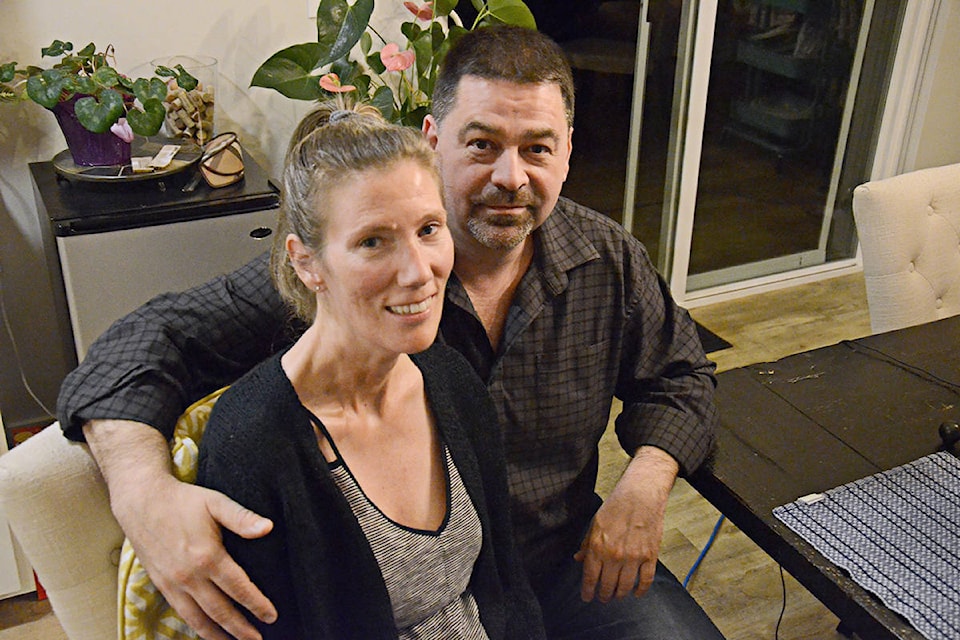Voting can require time, research, and thought, but for people with physical disabilities, casting a ballot can be even more difficult.
Langley’s Leanne Yacyshyn is speaking out after she ran into trouble even getting into her polling place during last month’s federal election.
“I am a 46-year-old mom who is living with ALS [amyotrophic lateral sclerosis],” she told the Langley Advance Times. “I can no longer speak, walk or use my hands, but my cognitive abilities are fully intact. I, like every other Canadian, have the privilege of voting and despite the challenges involved with getting out, I will continue to exercise my right to vote.”
When Leanne and her husband, Cory, headed out to vote on Oct. 21 at Langley Secondary, the rain was pouring down.
“Unfortunately, the polling station did not make it easy for me or others with physical disabilities to get into the building,” said Leanne.
The main entrance to the voting area had a step up, and was not wheelchair accessible.
The Yacyshyns tried to find an access point with a ramp, heading around to a different side of the building, but they couldn’t locate one.
“There was no signage to indicate where the wheelchair access was and by the time we made it to one side looking for a ramp with no success, we were absolutely soaked,” said Leanne, who communicates with a computer.
She would like things to improve in the future.
They returned to the main entrance, where a woman with a stroller was getting help to lift it inside.
The man who helped with the stroller aided Cory in lifting Leanne’s wheelchair into the polling place, and she could vote.
“We were told there were signs outside [indicating wheelchair access] but nobody seemed to have seen them,” said Leanne.
“In fact, there was no signage for handicapped people,” said Cory.
In the five minutes it took them to get inside, they got soaked in the downpour.
Leanne hopes her story will help make things better in the next election for accessibility and signage.
“Accessibility is important not just for us wheelchair users, but for those pushing strollers or using walkers,” she said. “In the few minutes I was at the station, there were three of us who fit this category.”
People did aid her on election day.
“My point was not just to complain, but to mention people who helped us,” said Leanne.
“The silver linings had to be the kind polling staff, the gentleman who lifted me into the building and the thoughtful woman who followed us from the parking lot, around the building and back out to our car holding her umbrella over me.”
Elections Canada, notes on its website that polling places have 37 accessibility criteria, of which 15 are mandatory.
There are 30,000 polling places across Canada, all of which must meet the 15 main requirements.
